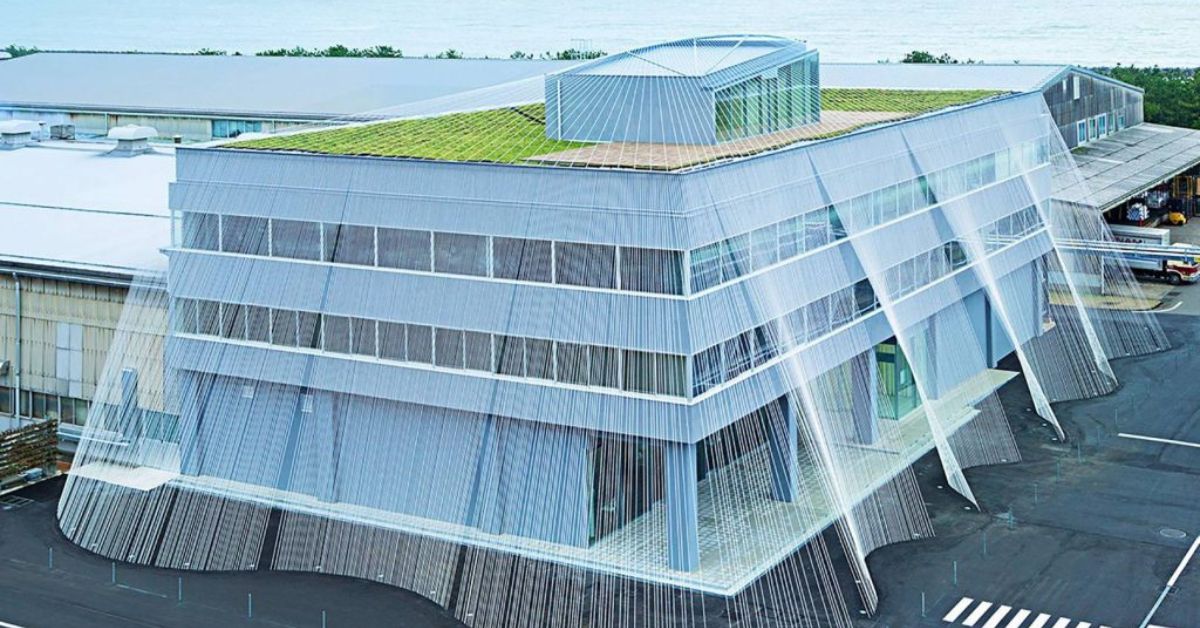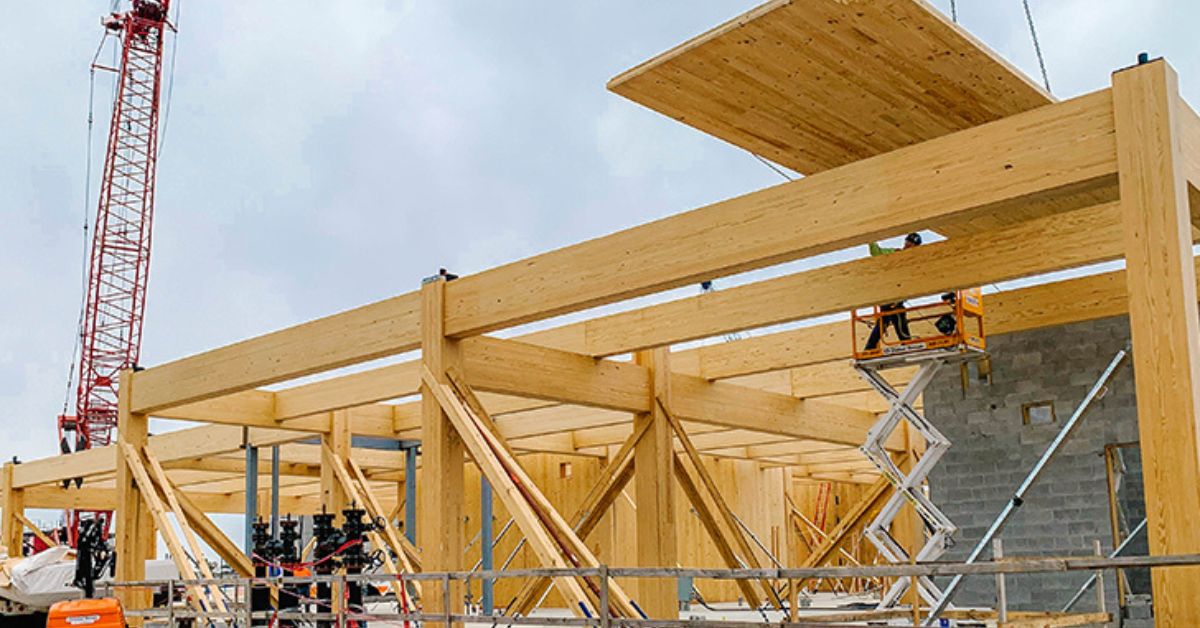REAL ESTATE
Playa El Tulate Guatemala Real Estate: Tips and Insights for Investors

Nestled along the stunning coastline of Guatemala lies Playa El Tulate, a hidden gem that is quickly becoming a hotspot for real estate investors. With its breathtaking beaches and vibrant culture, this serene locale offers more than just picturesque views; it presents unique opportunities for those looking to invest in property. As the world becomes increasingly aware of Central America’s appeal, Playa El Tulate stands out not only for its natural beauty but also for its potential as a lucrative investment destination. Whether you’re an experienced investor or new to the real estate game, understanding what makes this coastal paradise tick can set you on the path to success in Playa El Tulate’s burgeoning market.
Overview of the Current Real Estate Market in Guatemala
The current real estate market in Guatemala is experiencing a noteworthy transformation. Increased interest from foreign investors has sparked growth across various sectors. Urban areas, especially Antigua and Guatemala City, have seen significant price rises.
In contrast, coastal regions like Playa El Tulate are gaining traction for their untouched beauty and potential development opportunities. With tourism on the rise, beachfront properties are becoming more appealing to both residential buyers and rental investors.
Government initiatives aimed at boosting construction and sustainability further enhance the market’s attractiveness. There’s also a growing demand for eco-friendly developments that prioritize environmental preservation.
Despite challenges such as bureaucracy and fluctuating economic conditions, many see this as an opportune time to invest in luxury villas or affordable housing projects. The landscape is shifting rapidly; staying informed will be key for prospective buyers navigating these opportunities.
Advantages of Investing in Playa El Tulate
Playa El Tulate offers a unique opportunity for real estate investors. Its pristine beaches and stunning landscapes attract both locals and tourists, creating a vibrant market.
The area’s affordability is another major advantage. Compared to other coastal destinations in Central America, property prices remain relatively low. This allows investors to enter the market without breaking the bank.
Additionally, Playa El Tulate is experiencing increased interest from developers. New projects promise modern amenities while still preserving the natural beauty of the region.
The community vibe adds to its charm as well. Friendly locals and a laid-back atmosphere make it appealing for those looking for vacation homes or rental properties.
Guatemala’s growing economy supports long-term investment potential. As infrastructure improves, so does accessibility—making Playa El Tulate an attractive destination now and in the years ahead.
Potential Challenges for Investors in Playa El Tulate
Investing in Playa El Tulate comes with its fair share of challenges. One significant hurdle is the legal landscape. Understanding property laws and regulations can be daunting for newcomers.
Another concern is market volatility. While the area shows promise, fluctuations can impact property values unexpectedly. Investors should remain cautious and informed about local trends.
Infrastructure development also poses a challenge. While improvements are underway, some areas still lack essential services like reliable utilities and transportation networks.
Cultural differences may affect communication as well. Building relationships with local agents or developers requires patience and respect for different customs.
Potential natural disasters such as hurricanes or storms could threaten properties along the coast. It’s wise to consider insurance options to mitigate these risks effectively before diving into investment opportunities in this vibrant region.
Tips for Investing in Playa El Tulate Real Estate
Research is key before diving into Playa El Tulate Guatemala real estate. Understand the local market trends and property values. This will give you a solid foundation for informed decisions.
Consider working with a local real estate agent who has experience in the area. Their insights can be invaluable, especially when navigating legalities or cultural nuances.
Visit the properties you’re interested in personally. Pictures can be deceiving; experiencing the location firsthand helps gauge its true potential.
Don’t overlook community amenities and future developments nearby. These factors often influence property value positively over time.
Be prepared for negotiations. Flexibility can lead to better deals, whether buying or renting out your investment.
Think long-term rather than seeking quick profits. Real estate investment is often most rewarding over several years as markets evolve.
The Future of Playa El Tulate’s Real Estate Market
Playa El Tulate’s real estate market is on the brink of transformation. As tourism continues to rise, developers are eyeing this coastal gem for new projects.
With its stunning beaches and vibrant culture, it’s becoming a hotspot for both locals and expats. This shift promises not only growth but also an increase in property values over time.
Sustainable development is gaining traction among investors as well. Eco-friendly properties will likely attract a niche market focused on sustainability while preserving the area’s natural beauty.
Infrastructure improvements are underway, enhancing accessibility and amenities. Better roads and services will draw more visitors year-round, further boosting demand for real estate.
As Playa El Tulate evolves, so too does the opportunity for savvy investors ready to capitalize on its potential. The coming years could redefine what beachfront living means in Guatemala’s tranquil paradise.
Conclusion
Playa El Tulate is an exciting destination for real estate investors looking to capitalize on the growing interest in Guatemala’s coastal properties. The current real estate market offers a unique blend of affordability and potential for appreciation, particularly in regions like Playa El Tulate.
Investors are drawn here not only by the stunning natural beauty but also by the advantages of a developing area. While there are some challenges—like navigating local regulations or understanding property values—the rewards can be significant.
With proper research and strategic planning, investing in Playa El Tulate could lead to fruitful opportunities. As this beautiful beach continues to gain recognition, its appeal as a prime location for vacation rentals and residential properties will likely increase.
The future looks bright for Playa El Tulate’s real estate market, making it a compelling choice for savvy investors seeking their next venture in Guatemala. Dive into this vibrant community now before it’s too late; certainly, you won’t regret being part of such an extraordinary investment opportunity!
REAL ESTATE
Hurricane & Earthquake-Resistant Designs: New Engineering Techniques for High-Risk Zones

The U.S. construction industry faces growing challenges from natural disasters like hurricanes and earthquakes. Contractors and material suppliers must adapt to new engineering techniques that enhance building resilience in high-risk areas. With climate change increasing storm intensity and seismic activity, innovative designs are no longer optional—they’re essential.
Why Disaster-Resistant Construction Matters
Hurricanes and earthquakes cause billions in damages every year. For contractors and material suppliers, building resilient structures means:
– Reducing repair costs for property owners.
– Meeting stricter building codes in disaster-prone states.
– Improving safety for occupants.
New engineering techniques are making it easier to construct buildings that can withstand extreme forces.
Hurricane-Resistant Construction Techniques
- Wind-Resistant Roofing & Wall Systems
Hurricanes produce powerful winds that can tear off roofs and collapse walls. Contractors now use:
– Hurricane straps & clips – Metal connectors that reinforce roof-to-wall joints.
– Impact-resistant shingles – Made from polymer-modified asphalt to resist wind uplift.
– ICF (Insulated Concrete Forms) – Foam blocks filled with concrete for stronger walls.
- Flood-Proof Foundations
Storm surges and heavy rains lead to flooding. Solutions include:
– Elevated foundations – Raising homes on piers or stilts in flood zones.
– Permeable pavements – Allowing water drainage to reduce pressure on structures.
For outdoor projects, landscaping estimating services can help design drainage systems that prevent erosion and structural damage.
Impact-Resistant Windows & Doors
Flying debris is a major hazard. Contractors now install:
– Laminated glass – Holds together even when shattered.
– Storm shutters – Roll-down or accordion-style for added protection.
Earthquake-Resistant Construction Techniques
- Base Isolation Systems
This technique separates the building from ground movement using:
– Lead-rubber bearings – Absorb seismic energy.
– Sliding isolators – Allow the building to move independently of shaking ground.
- Reinforced Shear Walls & Cross Bracing
Steel and concrete reinforcements prevent collapse by:
– Shear walls – Thick walls that distribute seismic forces.
– Cross bracing – Diagonal steel beams for extra stability.
- Flexible Pipe & Utility Systems
Earthquakes can rupture gas and water lines. New solutions include:
– Swing joints – Allow pipes to bend without breaking.
– Automatic shutoff valves – Prevent gas leaks after a quake.
How Material Suppliers Can Support Resilient Construction
Suppliers play a key role by providing:
– High-strength concrete – For foundations and shear walls.
– Fiber-reinforced polymers (FRP) – Lightweight but strong alternative to steel.
– Seismic-resistant fasteners – Bolts and connectors that withstand shaking.
For large-scale projects, landscape estimating services ensure proper material calculations for retaining walls and other outdoor reinforcements.
The Future of Disaster-Resistant Construction
New trends include:
– Self-healing concrete – Repairs cracks automatically.
– AI-powered structural monitoring – Detects weaknesses before disasters strike.
– Modular construction – Prefab designs that meet strict resilience standards.
Conclusion
Contractors and material suppliers must stay updated on hurricane and earthquake-resistant techniques to build safer, longer-lasting structures. From wind-resistant roofing to seismic base isolators, innovation is transforming disaster-prone construction.
For outdoor projects, partnering with landscaping estimating services ensures accurate planning for resilient landscapes. By adopting these methods, the construction industry can reduce risks and protect communities from nature’s worst.
Final Note:
– Use landscape estimating services for precise material planning.
– Consult landscaping estimating services for drainage and erosion control in high-risk zones.
This approach keeps projects on budget while meeting safety standards. Stay ahead—build stronger!
REAL ESTATE
Supply Chain & Material Innovations: Onshoring Construction Materials

The U.S. construction industry is undergoing major changes due to supply chain disruptions, rising material costs, and the push for sustainability. Contractors and material suppliers are now focusing on onshoring construction materials—bringing production back to the U.S. to reduce delays and costs. At the same time, new material innovations are transforming how projects are built.
Why Onshoring Construction Materials Matters
For years, the U.S. construction industry relied heavily on imported materials like steel, lumber, and cement. However, global supply chain issues—such as shipping delays, tariffs, and geopolitical conflicts—have made imports unreliable and expensive.
Key Benefits of Onshoring:
✔ Faster Deliveries – No more waiting months for overseas shipments.
✔ Lower Costs – Reduced shipping and tariff expenses.
✔ Better Quality Control – U.S.-made materials often meet stricter standards.
✔ Supporting Local Economies – More jobs for American workers.
Many contractors now prefer suppliers who source materials locally, ensuring smoother project timelines. Accurate construction takeoff services help them plan better by estimating material needs early, avoiding last-minute shortages.
Material Innovations Changing Construction
While onshoring solves supply chain problems, new materials are making construction faster, stronger, and greener. Here are some breakthroughs:
- Mass Timber & Engineered Wood
Instead of traditional steel and concrete, builders are using cross-laminated timber (CLT)—a strong, lightweight, and sustainable alternative. It’s easier to transport and install, cutting project timelines.
- Self-Healing Concrete
Cracks in concrete can weaken structures. New self-healing concrete uses bacteria or special polymers to repair itself, extending a building’s lifespan.
- Recycled & Sustainable Materials
From recycled plastic bricks to low-carbon cement, eco-friendly materials help contractors meet green building codes while reducing waste.
- Graphene-Enhanced Materials
Graphene—a super-strong nanomaterial—is being mixed into concrete and steel, making them lighter yet more durable.
With these innovations, takeoff estimating services become crucial. They help contractors calculate exact material quantities, preventing waste and saving money.
How Contractors & Suppliers Can Adapt
- Partner with Local Suppliers
By sourcing materials within the U.S., contractors avoid import risks. Suppliers investing in domestic production will have a competitive edge.
- Use Digital Tools for Better Planning
Tools like construction takeoff services allow precise material measurements, reducing over-ordering and delays.
- Stay Updated on New Materials
Contractors who adopt innovative materials early can bid on more projects, especially those requiring sustainable solutions.
- Improve Inventory Management
With onshoring, lead times shorten, but contractors still need efficient tracking. Cloud-based software helps manage stock levels in real time.
The Future of U.S. Construction
The shift to onshoring construction materials is more than a trend—it’s a necessity. Paired with cutting-edge materials and smart planning tools like takeoff estimating services, contractors and suppliers can build faster, cheaper, and greener.
As demand grows for resilient and sustainable construction, those who embrace these changes will lead the industry.
Final Thoughts
The U.S. construction industry is evolving rapidly. By bringing material production back home and adopting new technologies, contractors and suppliers can overcome supply chain challenges. Tools like construction takeoff services ensure projects stay on budget and schedule.
REAL ESTATE
Mass Timber Construction: Why Contractors & Suppliers Are Switching to Cross-Laminated Timber (CLT)

The construction industry is changing fast, and one of the biggest trends is mass timber construction. More builders and material suppliers are turning to cross-laminated timber (CLT) as a strong, eco-friendly alternative to steel and concrete. This shift is not just about sustainability—it also speeds up projects, cuts costs, and opens new business opportunities for lumber takeoff services and suppliers.
What Is Mass Timber & Cross-Laminated Timber (CLT)?
Mass timber is a category of engineered wood products that are strong enough to replace steel and concrete in large buildings. The most popular type is cross-laminated timber (CLT), made by stacking layers of wood at right angles and gluing them together under pressure. The result? A lightweight yet incredibly strong building material.
CLT is being used for:
– Mid-rise and high-rise buildings (up to 18 stories!)
– Flooring, walls, and roofs
– Prefabricated modular construction
Unlike traditional lumber, CLT is precision-engineered, meaning fewer errors and faster assembly on-site.
Why Are Contractors & Suppliers Choosing CLT?
- Sustainability & Lower Carbon Footprint
Concrete and steel production create a lot of CO₂ emissions. CLT, on the other hand, stores carbon instead of releasing it. Since wood is renewable, mass timber helps builders meet green building standards like LEED and net-zero goals.
- Faster Construction & Lower Labor Costs
CLT panels are prefabricated off-site, so buildings go up much quicker. This reduces labor costs and weather-related delays. Contractors using lumber takeoff services can also ensure precise material orders, minimizing waste.
- Lightweight Yet Strong
CLT is lighter than concrete but just as strong. This means:
– Smaller foundations (saving money)
– Easier transportation (lower fuel costs)
– Better earthquake resistance (wood flexes, while concrete cracks)
- Fire Resistance (Yes, Really!)
Many people worry about wood and fire, but CLT chars slowly, forming a protective layer that keeps the structure intact longer than steel, which can weaken under extreme heat.
How Material Suppliers & Contractors Can Benefit
For Lumber Suppliers:
– Growing demand means more sales opportunities.
– Precision manufacturing reduces waste, improving profit margins.
– Partnerships with lumber takeoff providers can help clients order the right amounts.
For Contractors:
– Faster project completion = more jobs per year.
– Lower shipping costs (CLT is lighter than steel/concrete).
– Prefabrication reduces on-site errors—accurate lumber takeoff ensures no shortages or excess.
Challenges & How to Overcome Them
While CLT has many benefits, there are still hurdles:
- Building Code Restrictions
Some areas still limit wood construction for tall buildings. However, new codes (like the 2021 IBC) now allow CLT structures up to 18 stories.
- Higher Upfront Material Costs
CLT can be more expensive than traditional lumber (but cheaper than steel/concrete in the long run due to faster builds).
- Need for Accurate Planning
Since CLT is prefabricated, mistakes in measurements can be costly. This is where lumber takeoff services help—by ensuring exact material estimates before production begins.
The Future of Mass Timber Construction
Experts predict the mass timber market will double by 2030. Governments are also encouraging its use through incentives for sustainable building.
For contractors and suppliers, this means:
– More projects using CLT (schools, offices, apartments).
– New business models (prefab construction, modular housing).
– Stronger partnerships between builders, suppliers, and lumber takeoff experts.
Final Thoughts
Mass timber construction is here to stay, and cross-laminated timber (CLT) is leading the way. With benefits like speed, sustainability, and cost savings, it’s no wonder contractors and suppliers are making the switch.
For businesses, the key to success is accurate planning—whether it’s ordering materials or using lumber takeoff services to avoid waste. As building codes evolve and demand grows, those who adapt early will have a competitive edge.
-

 TECHNOLOGY2 years ago
TECHNOLOGY2 years agoElevating Game Day Eats: A Guide to Crafting Crowd-Pleasing Sliders
-

 ENTERTAINMENT2 years ago
ENTERTAINMENT2 years agowave_of_happy_: Your Ultimate Guide
-

 FASHION2 years ago
FASHION2 years agoGPMsign Fashion: Redefining Style with Purpose
-

 TECHNOLOGY1 year ago
TECHNOLOGY1 year agoTrader Joe’s Dayforce: Revolutionizing Workforce Management
-

 FOOD2 years ago
FOOD2 years agoAltador Cup Food Court Background: A Culinary Extravaganza Unveiled
-

 SPORTS2 years ago
SPORTS2 years agoScore Chaser Sporting Clays: A Thrilling Pursuit of Precision
-

 HOME IMPROVEMENT1 year ago
HOME IMPROVEMENT1 year agoWhat Kitchen Renovation Companies Offer Beyond Basic Remodeling
-

 NEWS2 years ago
NEWS2 years agoNyl2 Kemono: Unveiling the World
